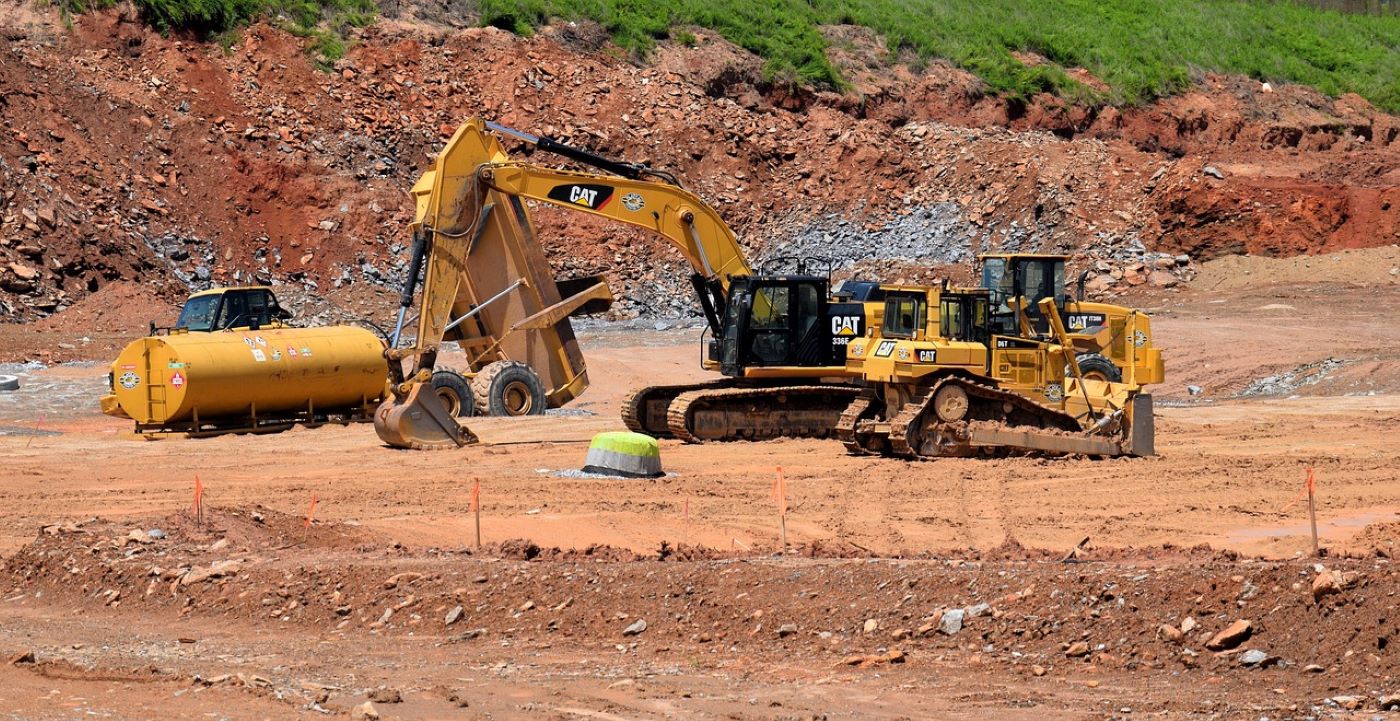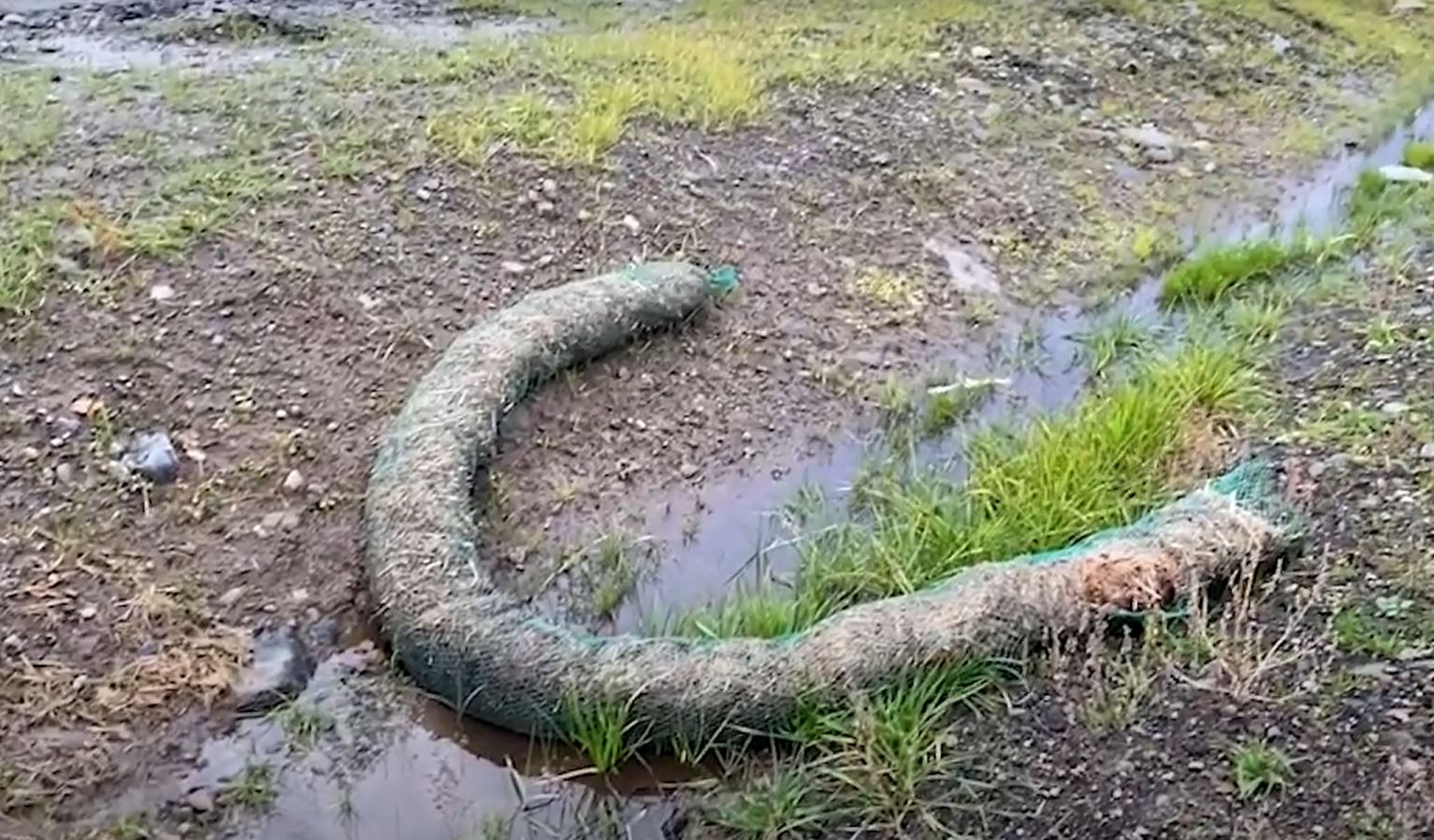
Construction BMP Guide: C207 Check Dams
Check dams are used where temporary or permanent channels are not yet vegetated, channel lining is infeasible and velocity checks are required. Construction of check dams across a swale or ditch reduces the velocity of concentrated flow and dissipates energy reducing erosion potential and allowing for minor settling of sediment.
*The contents of this guide are to provide a general overview only. It is the users responsibility to ensure all BMPs utilized on their project meet the requirements of their state and local jurisdictions.

Construct rock check dams with rock large enough to avoid being washed away in the expected flows within the channels.
 Temporary check dams can be quickly installed using wattles. Ensure wattles are adequately staked to avoid being washed down stream.
Temporary check dams can be quickly installed using wattles. Ensure wattles are adequately staked to avoid being washed down stream.

The maximum spacing between the check dams shall be such that the downstream toe of the upstream dam is at the same elevation as the top of the downstream dam. Credit: Washington Department of Ecology
Check Dam Installation:
- Construct rock check dams from appropriately sized rock. The rock used must be large enough to stay in place given the expected flow.
- The rock must be placed by hand or by mechanical means (do not dump the rock to form the dam) to achieve complete coverage of the ditch or swale and to ensure that the center of the dam is lower than the edges.
- Check dams may also be constructed of either rock or pea-gravel filled bags. Numerous new products are also available for this purpose. They tend to be reusable, quick and easy to install, effective, and cost efficient.
- Place check dams perpendicular to the flow of water.
- Before installing a check dam, impound and bypass upstream water flow away from the work area. Options for bypassing include pumps, siphons, or temporary channels.
- Check dams combined with sumps work more effectively at slowing flow and retaining sediment than a check dam alone. A deep sump should be provided immediately upstream of the check dam.
- In some cases, if carefully located and designed, check dams can remain as permanent installations with very minor regrading. They may be left as either spillways, in which case accumulated sediment would be graded and seeded, or as check dams to prevent further sediment from leaving the site.
- The maximum spacing between the check dams shall be such that the downstream toe of the upstream dam is at the same elevation as the top of the downstream dam.
- Keep the maximum height at 2 feet at the center of the check dam.
- Keep the center of the check dam ≥ 12 inches lower than the outer edges at natural ground elevation.
- Keep the side slopes of the check dam at ≤ 2H:1V.
- Key the rock into the ditch banks and extend it beyond the abutments a minimum of 18 inches to avoid washouts from overflow around the dam.
- Use geotextile foundation under a rock or sand bag check dam. If a blanket ditch liner is used, geotextile is not necessary. A piece of organic or synthetic blanket cut to fit will also work for this purpose.
- In the case of grass-lined ditches and swales, all check dams and accumulated sediment shall be removed when the grass has matured sufficiently to protect the ditch or swale—unless the slope of the swale is > 4%. The area beneath the check dams shall be seeded and mulched immediately after dam removal.
- Ensure that culvert entrances below check dams, are not subject to damage or blockage from displaced rocks

Check Dam Maintenance:
- Check dams shall be monitored for performance and sediment accumulation during and after each rainfall that produces runoff. Sediment shall be removed when it reaches one-half the sump depth.
- Anticipate submergence and deposition above the check dam and erosion from high flows around the edges of the dam.
- If significant erosion occurs between dams, install a protective riprap liner in that portion of the channel. See BMP C202 (Riprap Channel Lining).



